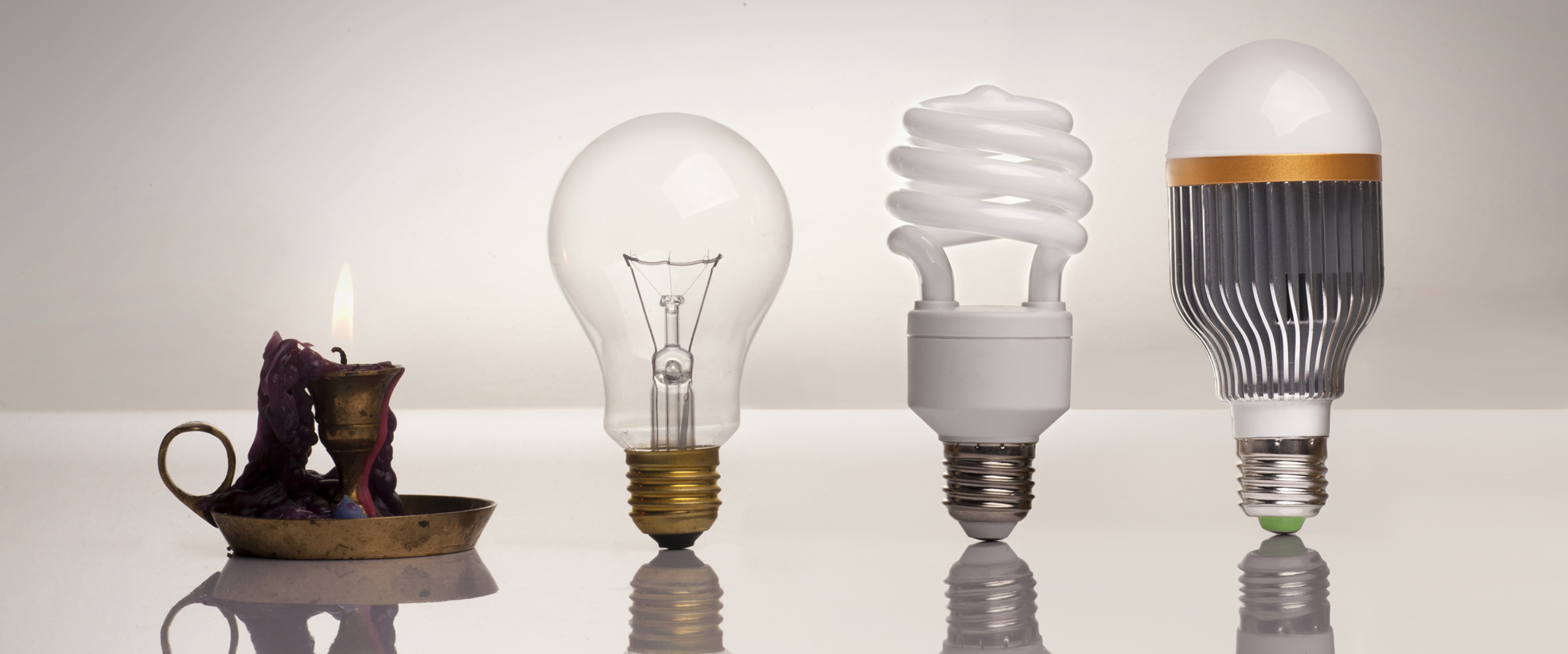14 Apr LED Lighting: A Cost-Effective Solution
Commercial and residential property owners are becoming more conscious about saving money and the environment. Transitioning to an energy-efficient lighting solution can lower utility bills and lessen the burden on the environment and nonrenewable energy sources. Over the years, LEDs have become the most efficient and accessible lighting solution on the market standing above its competitors, incandescent and compact fluorescent bulbs.
Many are unaware of the structure of LEDs and how transitioning to this lighting solution will positively impact their company. Throughout this article, we’ll walk through the history of LEDs and how they work, a comparison to competitors, and how your commercial or residential property will benefit.
All About LEDs
The acronym LED stands for “light-emitting diode.” The overall structure of the bulb is straightforward and cheap to produce, which is very appealing to customers. An electrical component called a diode exists in the structure that consists of two terminals that conduct electricity in one direction.
This conduction is required to produce light, and with the electrical current created, the diode emits a bright light around the bulb. According to Energy Star, LED lighting products produce light approximately 90% more efficiently than incandescent lights.
Brief History
Like any technology-based product, as new advancements and discoveries are made, products continue to improve and evolve over the years. While the history of LEDs is much more extensive and detailed, below are a few significant highlights to show their rising popularity over the years.
- 1960s. LEDs originated and were used as indicator lights for small electrical equipment and circuit boards. The structure was already pinpointed as a durable, energy-efficient lighting solution.
- 1980s. With technology continuing to advance, LEDs are becoming brighter and more reliable for users. Individuals discovered how to string multiple LEDs into a single circuit leading to more versatility. LEDs are available for outdoor use, continue to replace incandescent bulbs in traffic lights, and begin to replace fluorescent bulbs in lighted signs.
- 2000s. LEDs are utilized for commercial, industrial, and residential applications and continues to benefit users in numerous ways. LED technology is continuing to expand exponentially.
How Do They Work?
LEDs operate on a simple system resulting in bright light that many have been drawn to when compared to other lighting options. The diode is connected to an electrical current, which activates electrons and results in the release of photons. Photons are what makes us, as humans, see light. The color of the light is a result of the energy gap in the semiconductor of the diode, meaning LEDs can produce a spectrum of bright colors while using little to no electricity.
Common LED colors include, but are not limited to, blue, green, red, and amber. The “white light” many of us enjoy is produced when the diode is combined or covered with a phosphor material, which alters the color of the light initially produced.

Comparison to Other Lighting Methods
While the benefits are endless when comparing LEDs to other lighting options, there are a few major ones that should be considered when deciding if you should make the transition for your property.
- Incandescent. This bulb has the lowest efficiency rating, accompanied by a shorter lifespan when compared. Additionally, incandescent bulbs get much hotter than LEDs, thus resulting in higher costs for a less energy-efficient option.
- Compact Fluorescent (CFL). This bulb is more comparable to LEDs when it comes to efficiency and lifespan, yet it still doesn’t match. The light projected isn’t as bright as incandescent and LED options, but the temperature and yearly cost are more comparable to the LED lighting option.
Benefits
When compared to incandescent and fluorescent bulbs, LED lighting differs in many ways bringing users benefits such as increased efficiency, versatility, longer life, and much more. Explore the variety of benefits provided by LEDs below, as they will show you why your property should choose to transition to a better lighting option.
Longer Lifespan
Compared to other types of lighting, LEDs impress users with a much longer lifespan. LED lights can last 40 times longer than incandescent bulbs, and often longer than that. Their long lifespan results in savings over time, as you will be required to purchase fewer replacement bulbs.
LEDs range in quality depending on their purpose and the environment they’re utilized in, meaning you will easily find a product that meets your use requirements and budget.
Small and Durable
Due to the small size of LEDs, they have the versatility to be used in unusual locations. Users can utilize more LEDs in smaller areas resulting in cost-savings due to their lighting solutions being condensed. Additionally, the structure of LEDs allow them to be more durable and less likely to break or be damaged. LEDs are solid-state lights, meaning they don’t require the glass encasement like traditional bulbs.
Generate Directional Emissions
LEDs transmit little to no wasted light when compared to traditional bulbs, meaning less energy is wasted, resulting in more savings for your property. This lighting option projects light in 180 degrees, unlike traditional bulbs that project light in 360 degrees. Often, it is unnecessary for bulbs to emit light all around as a lit ceiling is pointless and results in wasted energy.
Energy Efficient
LED lighting has proven to consume less power than other light bulbs, resulting in lower operating costs and less energy consumption. Unlike other lighting options, LEDs provide users with up to a 75% improvement in energy ratings depending on how much existing lighting is replaced. Since LED lights offer more coverage, users will notice a significant savings by strategically placing the new structures.
Dimming Features
LEDs have the capability to operate at various energy inputs, meaning they can be dimmed. Although it requires specific hardware and functioning mechanisms, this allows users to have full control over the brightness of each light resulting in less energy consumption and higher money savings. The dimming functions also increase the lifespan of the lighting on your property, as they are operating at a range of power, rather than full power like other lighting options.
Increased Safety
Many users report increased safety upon transitioning to LED lighting, as this option doesn’t generate as much heat when compared to other forms of lighting. In traditional lighting solutions, most of the energy is converted into heat rather than light, which can result in a dangerous situation, should something go wrong. If something were to go wrong with LEDs, there is a lower hazard rating since most of the energy is converted into light.
High Color Rendering Index (CRI)
CRI refers to the measurement of how colors look under a light source in comparison to sunlight. Having a high CRI is a popular function many look for as it means your lighting is better at illuminating objects and revealing their actual colors. LED lights have a higher CRI at multiple power ratings when compared to traditional lighting.
No Warm-Up Period
If using traditional lighting, users notice that upon turning on, the brightness increases over time as the bulb needs time to warm up. This process can take anywhere from 1 to 15 minutes, depending on the strength of the fixture. LEDs turn on instantly and require no warm-up time, which results in less energy waste.
Low Voltage Compatibility
LEDs can be utilized in various applications because they operate on a low voltage, meaning they are incredibly versatile. The ability to operate on a low voltage also increases their safety and efficiency when compared to other lighting solutions. This also provides users with more customization abilities as LED lighting is a very flexible option.
Make the Transition to LED Lighting
Overall, LED lighting has proven to be an excellent way for property owners to save money, reduce operating costs, and decrease energy consumption. Though they are costly upfront, the benefits alone are worth the investment when compared to other lighting options. If you’re in search of ways to improve your property, LED lighting is the best option and will continue to grow in popularity for years to come.




